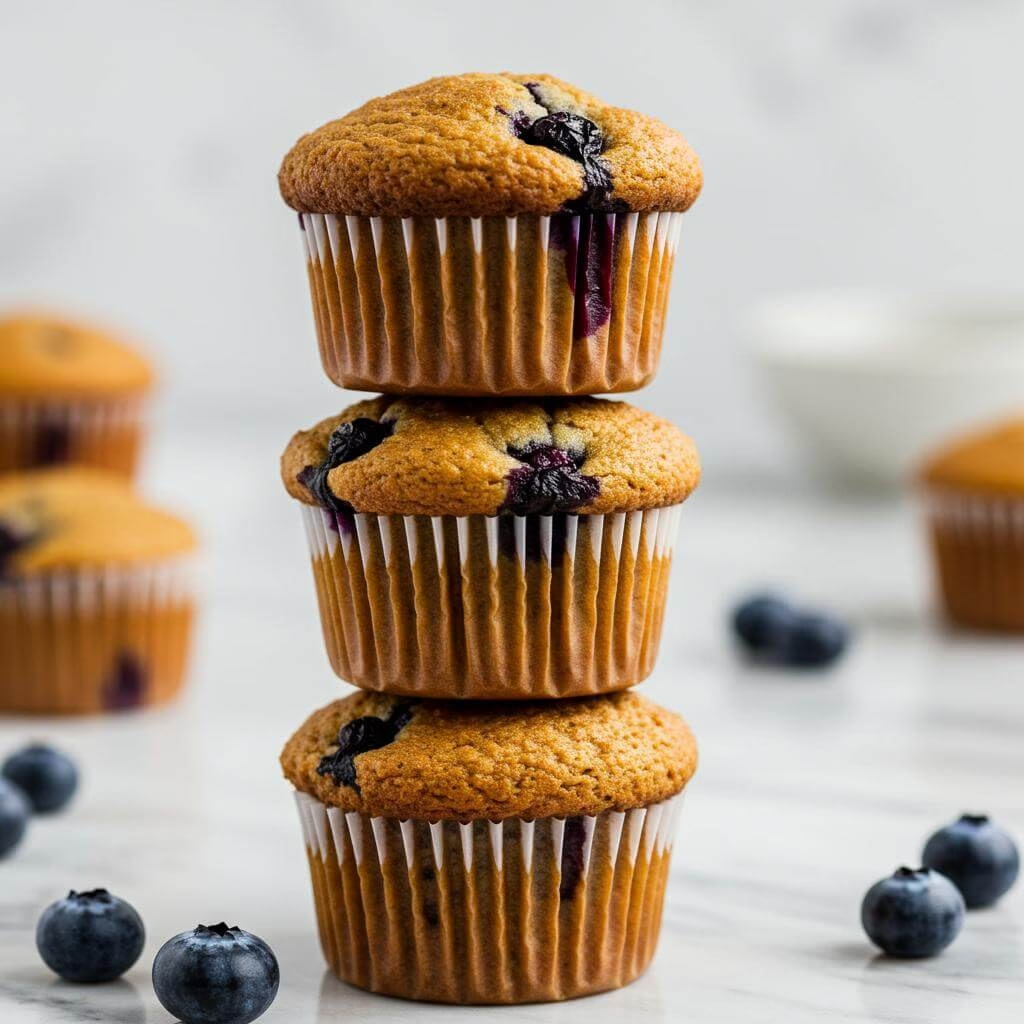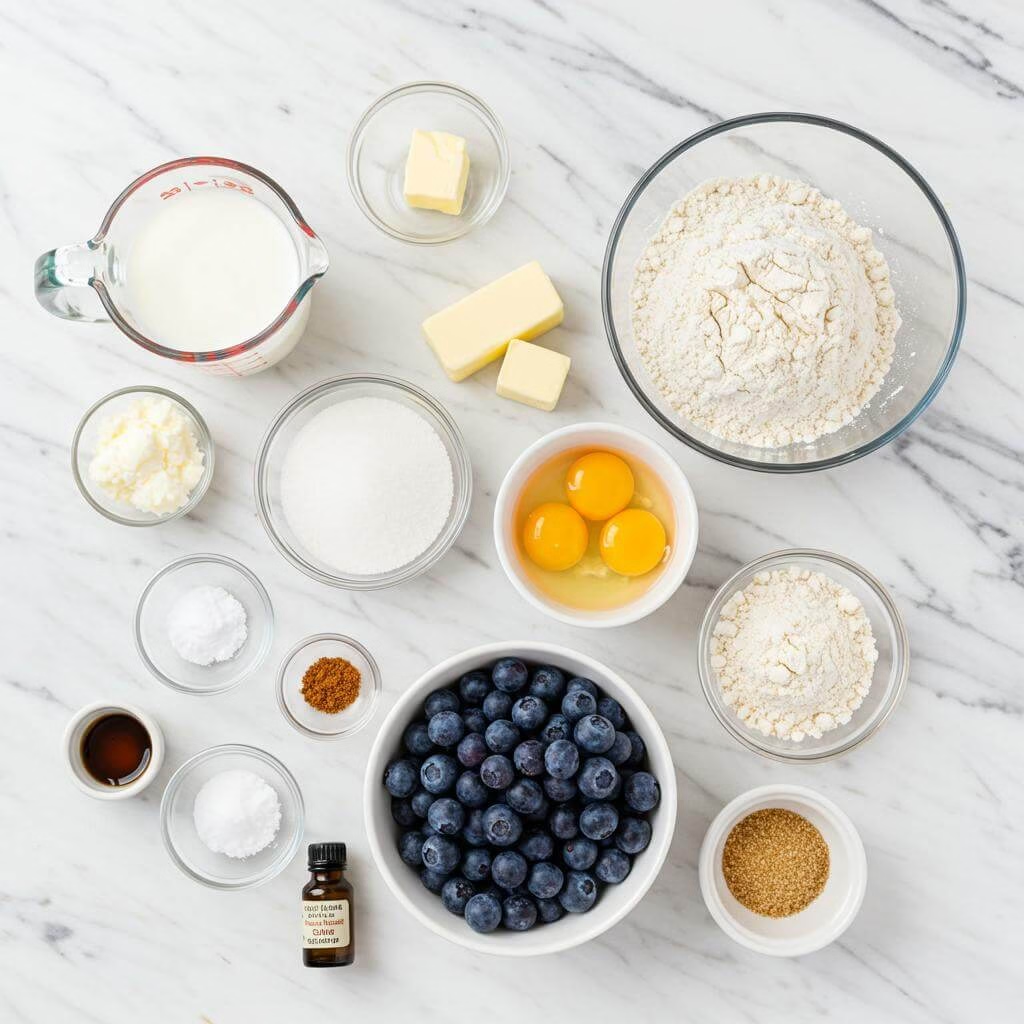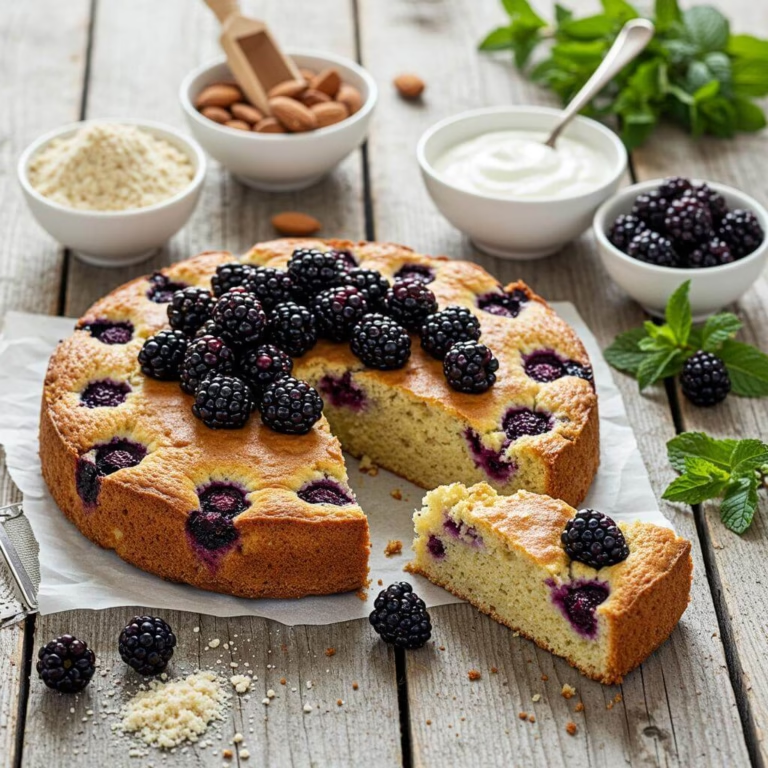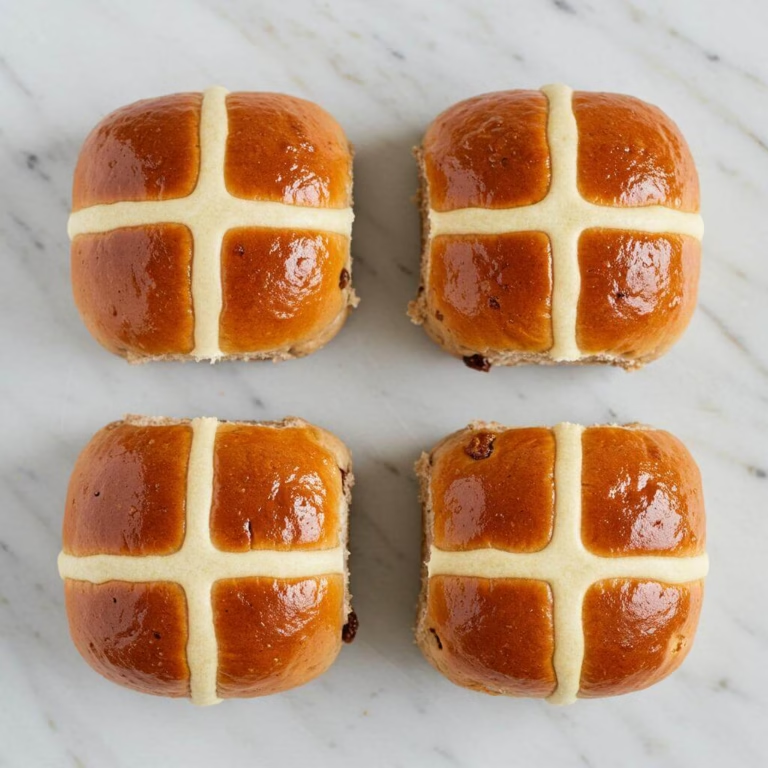
There’s something truly special about a warm, fluffy blueberry muffin, isn’t there? That perfect bite, bursting with juicy berries and a tender crumb, can brighten any morning or make for a delightful afternoon treat. But if you’re navigating a gluten-free lifestyle, you might think that achieving that classic muffin magic is out of reach. Well, think again! We’re here at Be Gluten Free to show you that delicious, easy-to-make gluten free blueberry muffins are absolutely possible, and this recipe is about to become your new go-to.
Forget any past experiences with dense or crumbly gluten-free bakes. Our quick and easy recipe delivers everything you dream of in a muffin: a beautifully soft texture, a delicate crumb, and an abundance of sweet blueberries in every mouthful. We’ve even got a little trick for achieving those irresistible bakery-style sugar tops! These aren’t just good ‘for gluten-free’ muffins; they’re simply fantastic muffins, period. Making delightful gluten free blueberry muffins at home has never been simpler, and we can’t wait for you to try them.
Why This Gluten Free Blueberry Muffin Recipe Will Be Your Favorite
We know that finding reliable gluten-free recipes can sometimes feel like a treasure hunt, but this one is a true gem. What makes these gluten free blueberry muffins stand out? Firstly, the simplicity! We believe gluten-free baking shouldn’t require a pantry full of obscure ingredients. This recipe uses straightforward components you likely already have or can easily find. Secondly, the results are consistently amazing. You’ll get that coveted soft, tender crumb that’s often elusive in gluten-free baking, all thanks to a carefully balanced blend of ingredients. Whether you’re a seasoned gluten-free baker or just starting out, you’ll appreciate how quickly these muffins come together – from bowl to oven in no time, baking to golden perfection in about 30 minutes!
And the joy doesn’t stop there! This recipe is wonderfully adaptable. We’ve included easy substitutions if you also need them to be dairy-free or egg-free (vegan-friendly), ensuring everyone can enjoy these delightful treats. Living gluten-free means finding recipes that are not only safe but also bring genuine pleasure and variety to your diet. These gluten free blueberry muffins do just that, proving that you don’t have to compromise on taste or texture. If you’re a fan of muffins in general, you might also love exploring our wider collection of gluten-free muffins, including other breakfast favorites like our amazing Gluten-Free Banana Nut Muffins. Get ready to fill your kitchen with the irresistible aroma of freshly baked goodness!
Why This Gluten Free Blueberry Muffin Recipe Works So Exceptionally Well
Creating truly delicious gluten free baked goods can sometimes feel like a culinary puzzle. Without the elastic, structure-building network of gluten, baked items can easily turn out dense, crumbly, or dry. But fear not! This recipe for gluten free blueberry muffins cracks the code, delivering muffins that are wonderfully soft, moist, and bursting with flavor, living up to the promise of a bakery-style treat. Let’s dive into the clever science and techniques behind its success.
The Foundation: A Smart Gluten-Free Flour Blend
At the heart of any successful gluten-free recipe is the flour blend. This recipe specifically calls for a gluten-free all-purpose flour that includes rice flour, starches, and crucial xanthan gum. Why is this combination so effective for gluten free blueberry muffins?
* Rice Flour & Starches: These flours (often a mix of white rice flour, brown rice flour, tapioca starch, and potato starch) provide the bulk and structure. Rice flour offers a neutral base, while starches are moisture absorbers and help create a tender crumb and a lighter texture than using just one type of grain. They gelatinize when heated, setting the structure of the muffin.
* Xanthan Gum: This is the absolute hero binder in gluten-free baking. Gluten’s superpower is its ability to create a stretchy network that traps air and gives structure and chewiness. Xanthan gum, a hydrocolloid, mimics this function. It thickens the batter and provides the necessary “glue” to hold everything together, preventing that dreaded crumbly texture often found in poorly formulated gluten free blueberry muffins. The recipe rightly warns about not adding extra xanthan gum if your blend already contains it – too much can lead to a gummy, unpleasant texture. The balanced amount here ensures the muffins hold together beautifully without being tough.
The Magic of Leavening and Acid
These gluten free blueberry muffins employ a classic chemical leavening combination: baking powder and baking soda, activated by an acidic component. The recipe brilliantly uses homemade buttermilk (milk + vinegar) for this purpose.
* Baking Powder: This contains both an acid and a base and reacts in two stages: once when wet and again when heated in the oven, providing sustained lift.
* Baking Soda & Acid (Buttermilk): Baking soda is a base that needs an acid to react. The vinegar added to the milk creates lactic acid (just like traditional buttermilk). When baking soda meets this acid, it produces carbon dioxide gas bubbles, which inflate the batter. This acid also tenderizes the crumb, which is particularly beneficial in gluten-free baking where dryness or toughness can be issues. The combination of double-acting baking powder and the soda-acid reaction ensures these gluten free blueberry muffins rise high and have a lovely, open texture instead of being flat and dense.
Moisture Masters: Fat, Sugar, and Liquids
A common pitfall in gluten-free baking is dryness. This recipe counteracts this with several key ingredients:
* Butter: Fat coats the starch molecules in the flour blend, inhibiting their ability to absorb too much liquid and creating a tender, moist crumb. Creaming the softened butter with sugar also incorporates air, contributing to the muffin’s rise and light texture.
* Granulated Sugar: Beyond sweetness, sugar is a hygroscopic ingredient, meaning it attracts and holds onto moisture. This significantly contributes to the softness and moistness of these gluten free blueberry muffins over time, helping them stay fresh longer.
* Milk/Buttermilk: Liquids are essential for hydrating the flour and starches, allowing the leaveners to react, and providing structure once the batter sets. The protein in the milk also contributes to browning and flavor.
Structure and Binding: The Role of Eggs
Eggs serve multiple critical functions in baked goods, and they are particularly important in gluten-free baking where the gluten network is absent.
* Structure: Egg proteins coagulate when heated, forming a structural matrix that helps the muffins hold their shape as they rise and set.
* Binding: Eggs act as a powerful binder, helping to keep all the ingredients together, especially important when working with flours that don’t naturally bind.
* Moisture and Richness: Egg yolks add fat and emulsifiers, contributing to a moist, rich texture.
The recipe notes that the balance between eggs and the gluten-free flour blend is key to height and texture. This highlights the careful formulation to ensure the binding from the eggs works harmoniously with the binding from the xanthan gum in the flour.
Smart Techniques for Perfect Results
Beyond the ingredient list, the method employs smart techniques for superior gluten free blueberry muffins:
* Coating Blueberries in Flour: This simple but genius step prevents the blueberries from sinking to the bottom during baking. The flour thickens the juice released by the blueberries and helps them stay suspended throughout the batter.
* Creaming Butter and Sugar: Incorporating air at the beginning sets the stage for a light texture.
* Adding Dry and Wet Ingredients Separately: This standard baking practice ensures the leavening agents are distributed evenly and activated properly. Adding the flour mixture before the buttermilk allows the fat to coat the flour particles first, contributing to tenderness.
* Not Overmixing: While there’s no gluten to develop, overmixing can still lead to tough results in gluten-free baking by overworking the starches and gums. Mixing just until combined is crucial for a tender muffin.
* Using Frozen Blueberries (if applicable): Adding frozen berries keeps the batter cold, which can help maintain volume and prevent the berries from bleeding excessively into the batter, resulting in beautiful pockets of fruit.
Seamlessly Supporting a Gluten-Free Lifestyle
What makes this recipe truly exceptional for those following a gluten-free lifestyle is its ability to deliver on taste and texture without compromise. These aren’t “good for gluten-free muffins”; they are simply *good* muffins. The careful balance of ingredients and techniques ensures a moist, tender crumb and a satisfying structure that rivals their gluten-containing counterparts. The inclusion of clear instructions for dairy-free and egg-free substitutions further enhances its accessibility, making delicious gluten free blueberry muffins achievable for those with multiple dietary needs.
By understanding the role of each component – the binding power of the gluten-free flour blend with xanthan gum, the lift from the leaveners and buttermilk, the moisture from fats and sugars, and the structure from eggs – you can appreciate why this recipe for gluten free blueberry muffins consistently produces wonderful results. It’s a testament to thoughtful recipe development that makes gluten-free baking not just possible, but truly enjoyable!
Transform Your Mornings with 33 FREE Gluten-Free Breakfasts!
Unlock delicious, easy-to-make recipes that will make you excited to start every single day. No more boring breakfasts, just pure flavor and joy!

Get Your FREE Breakfast Ebook Now!
(No credit card required. Instant download.)
Ingredients for Your Perfect Gluten-Free Blueberry Muffins
Creating delicious, moist gluten free blueberry muffins that everyone can enjoy starts with understanding the role of each ingredient. Here’s the list of simple ingredients you’ll need, along with a little insight into why they work so well in this gluten-free recipe:
Ingredient List:
- 3/4 cup milk: Adds flavor and moisture, contributing to a soft crumb. You can easily substitute this with unsweetened almond milk for a dairy-free option.
- 2 teaspoons white vinegar or lemon juice: Used to create a quick homemade buttermilk when combined with milk. This acidic liquid reacts with baking soda to help the muffins rise and develop a tender texture.
- 1/3 cup butter, softened: Provides richness and moisture, preventing the muffins from becoming dense. For dairy-free gluten free blueberry muffins, you can use a dairy-free or vegan butter alternative like Smart Balance.
- 1 cup granulated sugar: Sweetens the muffins and also helps retain moisture, contributing to their soft texture.
- 2 large eggs: Crucial for structure in gluten-free baking. Eggs help bind the ingredients and provide lift, balancing the density that can sometimes occur with alternative flours. For egg-free muffins, Bob’s Red Mill gluten-free egg replacer is a tested substitute.
- 1 teaspoon pure vanilla extract: Enhances the overall flavor profile.
- 1/4 teaspoon pure almond extract: Adds a lovely subtle nutty note that pairs beautifully with blueberries.
- 1 3/4 cups gluten-free flour all-purpose flour with xanthan gum: This is the foundational gluten-free component. Using a blend that already contains xanthan gum is key, as xanthan gum acts as a binding agent, mimicking the elasticity and structure that gluten provides. Different brands perform differently, so using a reliable cup-for-cup blend like Pillsbury gluten-free flour is recommended for consistent results in these gluten-free all-purpose flour with xanthan gum.
- 2 teaspoons gluten-free baking powder: A chemical leavening agent that provides significant lift, creating light and airy muffins.
- 1/2 teaspoon baking soda: Works in conjunction with the acidic homemade buttermilk to produce carbon dioxide, further aiding in the muffins’ rise and tender crumb.
- 1/2 teaspoon salt: Balances the sweetness and enhances all the other flavors.
- 2 teaspoons gluten-free flour all-purpose flour with xanthan gum: A small amount reserved for coating the blueberries. This is a simple but effective trick to prevent the blueberries from sinking to the bottom during baking.
- 2 cups blueberries: The star ingredient! You can use either fresh or frozen blueberries. If using frozen, do not defrost them before tossing with flour and adding to the batter.
- 2 tablespoons turbinado or raw sugar: Optional, but highly recommended for sprinkling on top before baking to achieve that delightful bakery-style crunchy crust on your gluten free blueberry muffins.
Nutritional Information
These gluten free blueberry muffins offer a tasty way to enjoy a classic treat without gluten. The nutritional information provided is an approximation per muffin:
- Calories: 214 kcal
- Carbohydrates: 36g
- Protein: 4g
- Fat: 7g
- Saturated Fat: 4g
- Polyunsaturated Fat: 1g
- Monounsaturated Fat: 2g
- Trans Fat: 1g
- Cholesterol: 46mg
- Sodium: 202mg
- Potassium: 124mg
- Fiber: 2g
- Sugar: 23g
- Vitamin A: 241 IU
- Vitamin C: 2mg
- Calcium: 68mg
- Iron: 1mg
While the exact nutritional content can vary slightly depending on the specific ingredients used (especially substitutions), these muffins offer some dietary fiber from the blueberries and gluten-free flour blend, and protein from the eggs and milk (or their substitutes). Enjoying homemade gluten free blueberry muffins allows you to control the ingredients, ensuring they meet your specific dietary needs.
Substitutions, Variations & Additional Tips
One of the great things about this recipe is its flexibility! Here are some tested substitutions and helpful tips to ensure your gluten free blueberry muffins turn out perfectly every time, plus ideas for variations:
Ingredient Substitutions:
- Dairy-Free: As mentioned above, substitute regular milk with unsweetened almond milk and butter with a dairy-free or vegan buttery spread. These swaps work seamlessly in this recipe.
- Egg-Free (Vegan): Bob’s Red Mill gluten-free egg replacer is a reliable substitute for the eggs. Follow the package instructions for the correct conversion for two eggs. This allows you to make delicious vegan gluten free blueberry muffins.
- Gluten-Free Flour Blends: This recipe was developed and tested specifically with a cup-for-cup gluten-free rice flour blend that includes xanthan gum, such as Pillsbury or King Arthur Baking Measure for Measure. Using blends with different primary ingredients (like almond, oat, or coconut flour *without* a blend) will drastically change the texture and likely will not work without significant recipe adjustments. Always check your blend to ensure it contains xanthan gum; adding extra when it’s already included can result in gummy muffins.
Helpful Baking Tips:
- Prep the Pan: Always line your muffin tin with cupcake liners or spray generously with gluten-free cooking spray for easy removal.
- Prevent Blueberries from Sinking: Do not skip the step of tossing your blueberries (fresh or frozen) with the measured 2 teaspoons of gluten-free flour. This coating helps suspend the berries evenly throughout the batter as the muffins bake.
- Measure Flour Correctly: For accurate gluten-free baking, use the “spoon & level” method. Lightly spoon the gluten-free flour into your dry measuring cup and level off the excess with a straight edge like the back of a knife. Scooping directly from the bag can compact the flour, leading to too much flour and dry muffins.
- Don’t Overmix: Once the wet and dry ingredients are combined, mix only until smooth. Overmixing gluten-free batters can negatively impact the texture.
- Uniform Muffins: Use a greased ice cream scoop or measuring cup to portion the batter into the muffin cups. This ensures consistent size and baking time for all your gluten free blueberry muffins.
- Bake on the Middle Rack: Baking on the middle oven rack provides the most even heat distribution, leading to beautifully baked muffins.
- Achieve Bakery Tops: Sprinkling the tops of the muffins with turbinado or raw sugar before baking gives them a lovely sparkle and a slight crunch, just like bakery-style muffins.
Storage and Make-Ahead:
- Make-Ahead Batter: You can prepare the muffin batter ahead of time! Mix everything except the blueberries. Cover the bowl tightly and refrigerate until you’re ready to bake. Gently fold in the floured blueberries just before scooping into the muffin tin.
- Storage: Once completely cooled (this is important to avoid condensation), store leftover gluten free blueberry muffins in an airtight container at room temperature.
- Freezing: These muffins freeze beautifully. Flash freeze the completely cooled muffins on a baking sheet for about 15-20 minutes until firm. Then, transfer them to a freezer-safe bag or container, pressing out as much air as possible. Double bagging helps prevent freezer burn.
- Thawing: Thaw frozen muffins overnight in the refrigerator. You can also warm them wrapped in foil in a 350°F (175°C) oven for about 10 minutes or microwave for 30-60 seconds.
With these ingredients and tips, you’re well on your way to making moist and delicious gluten free blueberry muffins that are perfect for breakfast, a snack, or dessert!
Essential Equipment for This Recipe
To prepare this delicious recipe, you’ll need the following kitchen tools:
- Mixing Bowls – A set of mixing bowls is essential for prepping and combining ingredients.
Find Mixing Bowls on Amazon - Measuring Cups and Spoons – Accurate measurements are key to baking success.
Find Measuring Cups and Spoons on Amazon - Baking Sheets – Perfect for baking cookies, roasting vegetables, and more.
Find Baking Sheets on Amazon - Whisks – Use a whisk to blend ingredients smoothly and incorporate air.
Find Whisks on Amazon - Spatulas – Ideal for folding ingredients and scraping bowls clean.
Find Spatulas on Amazon - Food Processors – For quickly chopping, slicing, and shredding ingredients.
Find Food Processors on Amazon - Saucepans – A saucepan is necessary for cooking sauces, heating liquids, and more.
Find Saucepans on Amazon - Chef’s Knives – A high-quality chef’s knife is essential for all your chopping needs.
Find Chef’s Knives on Amazon - Cutting Boards – Protect your countertops and make food prep easier with a good cutting board.
Find Cutting Boards on Amazon

- Set your oven temperature to 375°F (190°C) and allow it ample time to fully preheat. Preheating is crucial for achieving an even bake and that perfect rise on your gluten free blueberry muffins.
- Prepare your muffin tin. You have two great options here: either line each cup with cupcake liners (paper or silicone work well) or generously coat the inside of each cup with a gluten-free cooking spray. This step ensures your delicious gluten free blueberry muffins release easily after baking.
- In a large measuring cup or small bowl, create your homemade “buttermilk.” Pour the indicated amount of milk (you can use regular dairy milk or an unsweetened dairy-free alternative like almond milk – find unsweetened almond milk here) and stir in the white vinegar or lemon juice. Give it a quick stir, then place it in the refrigerator for about 5 minutes. Keeping it cold helps the reaction and ensures it’s ready when needed. The acid in the vinegar or lemon juice will curdle the milk slightly, creating a tangy buttermilk substitute that reacts with the baking soda for lift.
- Grab a spacious large mixing bowl. Add the softened butter (or dairy-free/vegan butter substitute – see options like dairy-free butter sticks here) and the granulated sugar. Use an electric mixer or a sturdy whisk to cream them together until the mixture is light and fluffy. This step incorporates air, contributing to the tender texture of your finished muffins. Make sure your butter is properly softened, not melted, for the best result.
- Into the creamed butter and sugar, crack in the eggs (if making egg-free, follow the substitution instructions using an egg replacer as specified in the recipe card). Add the pure vanilla extract and pure almond extract. Beat everything together until well combined and smooth.
- Now, add your dry ingredients: the gluten-free all-purpose flour blend (ensure it contains xanthan gum for structure), baking powder, baking soda, and salt. Mix these into the wet ingredients until the batter is just combined and smooth. At this stage, the batter will appear quite thick, which is expected for delightful gluten free blueberry muffins. Be very careful not to overmix gluten-free batter, as this can often lead to a crumbly or tough texture. Stop mixing as soon as the flour streaks disappear.
- Retrieve the cold homemade buttermilk (milk and vinegar mixture) from the refrigerator. Pour it into the muffin batter. Mix gently until it’s fully incorporated and the batter is smooth again. Remember the rule: mix until just combined; overmixing is the enemy of tender gluten free blueberry muffins!
- In a small or medium-sized bowl, place your blueberries. If using frozen blueberries, add them directly from the freezer without thawing – this helps them maintain their shape and prevents discoloration of the batter. Sprinkle the specified 2 teaspoons of gluten-free flour (the same blend you used earlier) over the blueberries. Gently stir the berries using a spoon or spatula to evenly coat them with the flour. This simple trick helps prevent the blueberries from sinking to the bottom of your gluten free blueberry muffins during baking.
- Carefully add the floured blueberries to the muffin batter. Using a spatula, gently fold the blueberries into the batter. The goal is to distribute them relatively evenly without crushing the berries or overworking the batter. Stop as soon as the berries are incorporated throughout.
- It’s time to fill the muffin tin! Using a greased ice cream scoop or a large spoon, scoop the batter into each prepared muffin cup. Filling them consistently, often about two-thirds to three-quarters full, helps ensure your gluten free blueberry muffins are uniform in size and bake evenly. If using a scoop, grease it lightly to prevent the sticky batter from sticking.
- For that classic, bakery-style finish and a touch of lovely texture, sprinkle the tops of the filled muffin cups generously with turbinado sugar (sometimes called raw sugar).
- Carefully place the muffin tin onto the middle rack of your preheated oven. This position typically provides the most even heat distribution for baking. Bake for 25-30 minutes. The muffins are ready when the tops are golden brown and a wooden skewer or toothpick inserted into the center of a muffin comes out clean, meaning there’s no wet batter sticking to it. Keep a close eye on them, especially towards the end of the baking time, as oven temperatures can vary. An oven thermometer can be helpful to verify your oven’s accuracy. These beautiful gluten free blueberry muffins will fill your kitchen with a wonderful aroma!
- Once baked, remove the muffin tin from the oven. Allow the muffins to rest in the pan for 3-5 minutes. This brief cooling period in the hot pan helps the structure set. After this resting time, carefully transfer the muffins from the tin to a wire cooling rack to cool down completely. Cooling on a rack allows air to circulate around the muffins, preventing the bottoms from becoming soggy.
- Ensure the gluten free blueberry muffins are completely cooled before storing them. Once they have reached room temperature, place them in an airtight container. Storing them properly helps maintain their freshness and soft texture. If you seal them while still warm, condensation can form inside the container, making the muffins sticky and potentially spoiling them faster. Enjoy your freshly baked, tender gluten free blueberry muffins!

Tips for Baking Your Best Gluten Free Blueberry Muffins
Ready to bake incredibly moist and perfect gluten free blueberry muffins? These tips are tailored specifically for handling gluten-free batters and will help you achieve tender, delicious results every time from this easy recipe:
- Measure Your Gluten-Free Flour Correctly: Achieving the right texture for gluten free blueberry muffins starts with proper flour measurement. Always use the “spoon & level” method detailed in the recipe: gently spoon your gluten-free flour blend into your dry measuring cup until it’s overflowing, then use the back of a straight knife or similar tool to level off the excess. Scooping directly from the bag can compact the flour, adding too much and resulting in heavy, dry gluten-free muffins.
- Check Your Gluten-Free Flour Blend for Xanthan Gum: Most quality gluten-free all-purpose blends suitable for baking these gluten free blueberry muffins already contain xanthan gum. This ingredient is crucial as it mimics the elasticity and structure that gluten provides. Ensure your blend has it; if not, you may need to add a small amount (check your blend’s packaging or common recommendations, but adding too much can make muffins gummy).
- Don’t Overmix the Batter: Gluten-free batters don’t develop structure like wheat batters, but they can still become tough or gummy if overmixed. Once you’ve added the dry ingredients and the buttermilk, mix only until everything is just combined and the batter is smooth. A few small lumps are perfectly fine and often desirable for tender muffins. Overmixing is a common culprit for dense gluten-free blueberry muffins!
- Coat Those Blueberries in Flour: This simple but essential step prevents the blueberries from sinking to the bottom during baking. Tossing the beautiful blueberries with a small amount of the gluten-free flour specified in the recipe helps suspend them evenly throughout the batter, ensuring you get juicy bursts of flavor in every bite of your gluten free blueberry muffins.
- Use Softened Butter (Not Melted!): Make sure your butter is properly softened but not oily or melted. Creaming softened butter with sugar creates tiny air pockets, which contribute significantly to the light and tender crumb of these gluten free blueberry muffins. Cold butter won’t cream properly, and melted butter will result in a denser muffin.
- Ensure Wet Ingredients Are Combined Smoothly: The recipe calls for making homemade buttermilk by combining milk and vinegar. Ensure this mixture is smooth before adding it to the batter. Also, fully incorporate the eggs and extracts after creaming the butter and sugar; this emulsifies the mixture and helps create a stable base for your gluten-free blueberry muffin batter.
- Cool Correctly for Best Texture: Allowing the gluten-free muffins to cool in the pan for the recommended 3-5 minutes before transferring them to a wire rack is important. This brief time in the hot pan helps the structure set gently. Cooling completely on a wire rack ensures air circulation around the entire muffin, preventing residual heat from steaming the bottoms and making them soggy. Patience here pays off with fluffy gluten free blueberry muffins!
Common Gluten-Free Blueberry Muffin Mistakes to Avoid
Even with a fantastic recipe for gluten-free blueberry muffins, certain missteps can lead to less-than-ideal results. Knowing these common pitfalls will help you bake with confidence and avoid disappointment:
- Incorrectly Measuring Gluten-Free Flour: As highlighted above, scooping flour directly from the bag is a major no-no for gluten-free baking. This packs the flour, adding too much weight and leading to heavy, dry, or crumbly gluten free blueberry muffins. Always spoon the flour into the cup and level it off.
- Overmixing the Batter: This is perhaps the single most common mistake in gluten-free baking, especially for muffins. Unlike wheat flour, which develops gluten when mixed, gluten-free flour mixes can become tough and gummy very quickly with excessive mixing. Mix only until the dry ingredients are just incorporated into the wet – stop as soon as the streaks of flour disappear.
- Not Coating the Blueberries: If you just dump plain blueberries into the batter, their weight can cause them to sink to the bottom during baking. This leaves you with muffins where all the fruit is concentrated at the base. Taking two seconds to toss them with a tablespoon or two of flour ensures they stay nicely distributed throughout your glorious gluten free blueberry muffins.
- Using the Wrong Gluten-Free Flour Blend: Not all gluten-free flour blends are created equal or designed for the same purpose. Using a blend intended only for bread, or one that lacks xanthan gum when the recipe assumes it’s present, can drastically alter the texture and rise of your gluten free blueberry muffins. Stick to an all-purpose blend that is a cup-for-cup substitute and contains xanthan gum as recommended by the recipe creator.
Frequently Asked Questions
What kind of gluten-free flour blend works best for these gluten free blueberry muffins?
For this recipe, we highly recommend using a cup-for-cup gluten-free all-purpose rice flour blend that already contains xanthan gum. Blends like Pillsbury or King Arthur Baking Measure for Measure are great examples and were used in testing this recipe. The xanthan gum is really important because it helps provide the structure and elasticity that gluten would normally give, ensuring your muffins aren’t dense or crumbly. Just be sure your blend includes it so you don’t accidentally add extra!
Can I use frozen blueberries instead of fresh ones?
Absolutely! You can use either fresh or frozen blueberries in these gluten free blueberry muffins. If you’re using frozen blueberries, the key is to add them directly from the freezer without thawing. This helps them hold their shape better during mixing and baking and also prevents the color from bleeding too much into the batter.
Why do I need to coat the blueberries in flour before adding them to the batter?
This is a simple but essential trick for making perfect gluten free blueberry muffins! Coating the blueberries with a little bit of the gluten-free flour helps them stay suspended in the batter as the muffins bake. Without this step, the blueberries tend to sink to the bottom, leaving you with muffins that have all the fruit at the very base.
How can I make these gluten free blueberry muffins dairy-free or egg-free?
This recipe is wonderfully adaptable! You can easily make them dairy-free by substituting the regular milk with unsweetened almond milk and using a dairy-free or vegan buttery spread (like Smart Balance) in place of the butter. To make them egg-free (and therefore vegan), you can substitute the two large eggs with Bob’s Red Mill gluten-free egg replacer, following the package instructions for the correct amount.
Why is it important not to overmix the batter?
With gluten-free baking, overmixing can really impact the texture. Once you’ve added the dry ingredients and then the buttermilk, you only want to mix the batter until everything is just combined and smooth. Overworking the batter can lead to muffins that are tough or have a less desirable texture compared to the soft, tender crumb you’re aiming for with these gluten free blueberry muffins.
What’s the best way to store these muffins, and can I freeze them?
To keep your delicious gluten free blueberry muffins fresh, make sure they are completely cooled to room temperature before storing. Placing warm muffins in a container can trap steam and make them sticky. Once cooled, store them in an airtight container at room temperature.
Yes, they freeze beautifully! After they are completely cool, flash freeze them on a baking sheet for about 15-20 minutes until firm. Then, transfer them to a freezer-safe bag or container, pressing out as much air as possible. Double bagging can help prevent freezer burn. Thaw frozen muffins overnight in the refrigerator, or warm them up wrapped in foil in a 350°F oven for about 10 minutes, or microwave for 30-60 seconds.
How should I measure the gluten-free flour accurately for this recipe?
Properly measuring gluten-free flour makes a big difference! We recommend using the “spoon & level” method. Use a spoon to lightly scoop the gluten-free flour into your dry measuring cup until it’s overflowing. Then, use the back of a straight knife or other flat edge to level off the excess flour. Avoid scooping the measuring cup directly into the flour bag, as this can compact the flour and result in using too much, which can lead to dry muffins.







One Comment